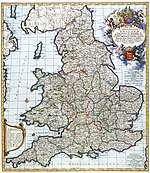Glorious Revolution
The Glorious Revolution (Irish: An Réabhlóid Ghlórmhar, Scottish Gaelic: Rèabhlaid Ghlòrmhor or Welsh: Chwyldro Gogoneddus), or Revolution of 1688, was the deposition and replacement of James II and VII as ruler of England, Scotland and Ireland by his daughter Mary II and his Dutch nephew and Mary's husband, William III of Orange, which took place between November 1688 and May 1689. The outcome of events in all three kingdoms and Europe, the Revolution was quick and relatively bloodless, though establishing the new regime took much longer and led to significant casualties.[1] The term was first used by John Hampden in late 1689.[2]
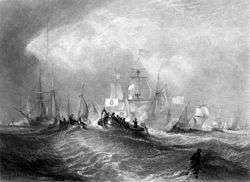 Prince of Orange Landing at Torbay engraving by William Miller (1852) | |
| Date | 1688–1689 |
|---|---|
| Location | British Isles |
| Also known as |
|
| Participants | English, Welsh, Irish and Scottish society, Dutch forces |
| Outcome |
|
Despite his Catholicism, James became king in February 1685 with widespread support because many feared excluding him would lead to a repetition of the 1638–1651 Wars of the Three Kingdoms.[3] His religion was seen as a short-term issue because his Protestant daughter Mary was heir presumptive, he was 52 and his second marriage remained childless after 11 years. The birth of his son, James Francis Edward, on 10 June 1688 changed this by the male-preference, automatic change of that heir presumptive, thus raising the prospect of a Catholic dynasty.[4]
James suspended the Scottish and English Parliaments when they refused to repeal the anti-Catholic Test Acts, and efforts to rule without them caused the instability his supporters wanted to avoid.[5] His primary support base in England were Tory members of the Church of England, who remained loyal until actions such as the prosecution of seven Anglican bishops seemed to go beyond tolerance and into an assault on the church. News that their prosecution had gone to full trial (albeit they were acquitted) on 30 June 1688 led to widespread anti-Catholic riots throughout England and Scotland and destroyed James's political authority.[6]
As stadtholder of Holland, William was de facto ruler of the Dutch Republic; the coalition he built after 1678 to defend it against French expansion was threatened by an Anglo-French alliance. With political support from allies in England, Scotland and Europe, a fleet of 463 ships landed William and 14,000 men in Torbay on 5 November. As he advanced on London, desertions reduced the 30,000 strong Royal Army to 4,000; James ordered these remnants disbanded and went into exile in December.[7] A Convention Parliament met in April 1689, making William and Mary joint monarchs of England; a separate but similar Scottish settlement was made in June.[8]
The Revolution was followed by pro-Stuart revolts in Scotland and Ireland, while Jacobitism persisted into the late 18th century. However, it ended a century of political dispute by confirming the primacy of Parliament over the Crown, a principle established in the Bill of Rights 1689.[9] Restrictions on Catholics contained in the 1678 and 1681 English and Scottish Test Acts remained in force until 1828; religious prohibitions on the monarch's choice of spouse were not removed until 2015, while restrictions on the monarch personally remain in place today.
Background
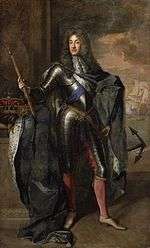
Despite his Catholicism, when James became king in 1685 his position seemed secure, as demonstrated by the rapid defeat of the Argyll and Monmouth Rebellions; less than four years later, he was forced into exile.[10] Often portrayed as an exclusively English event, modern historians argue it was the result of events in all three kingdoms.[11] It is also suggested that hostility to James was partly due to Charles II, whose policies were seen as being pro-France, pro-Catholic and absolutist.[12]
Context: England, Scotland, and Ireland
Prior to the 1638–1651 Wars of the Three Kingdoms, the vast majority of the English supported monarchy and belonged to the Church of England, even if they disagreed with aspects of doctrine. In 1649, Charles I was executed and replaced with the Commonwealth, a republic dominated by religious Independents such as Oliver Cromwell, who opposed any state-ordered religion. After the church was restored in 1660, the 1662 Act of Uniformity enforced greater consistency and expelled more than 2,000 Dissenting clergy.[13] Radicals such as Algernon Sidney and Henry Neville ensured that republican ideas retained visibility out of proportion to their numbers and increased fears of 'disorder'.[14]
The 1679-1681 Exclusion Crisis broadly split the English political class into those who wanted to 'exclude' James from the throne, or Whigs, and their opponents, or Tories. Many Whigs feared the consequences of bypassing James, while Tory support was conditional on preserving the primacy of the Church of England. Both saw it as a short-term issue; his second marriage remained childless and the heirs were his Protestant daughters, Mary and Anne.[15]
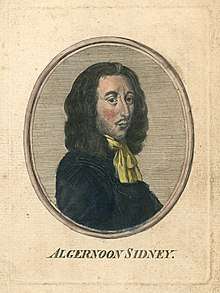
These distinctions were largely absent in Scotland, where support was more broadly based. In 1681 the Parliament of Scotland passed the Succession Act, which confirmed the duty of all to support the natural heir, 'regardless of religion.' The Act explicitly stated that one aim was to make James' exclusion from the English throne impossible without '...the fatall and dreadfull consequences of a civil war.'[16]
Over 95 percent of Scots belonged to the Church of Scotland or kirk, and apart from 1653–1660, other Protestant sects like Congregationalists were barred.[17] 'Episcopalian' and 'Presbyterian' now imply differences in doctrine, but in the 17th century, the terms related to structure. 'Episcopalian' meant governance by bishops, usually appointed by the monarch, while Presbyterian meant rule by Elders, nominated by congregations.[18] Conflict concerned the exercise of authority, but doctrine remained broadly similar, regardless of changes in governance.[19] Unlike the Church of England, the kirk was Calvinist in doctrine; even its bishops viewed many English practices as essentially Catholic.[20]
His Catholicism made James more popular in Ireland, but religion was only one issue; the Church of Ireland was a minority, even among Irish Protestants, and the penal laws were loosely enforced.[21] A bigger concern was the percentage of Irish lands owned by Catholics, which fell from 90 percent in 1600 to 22 percent by 1685. The 1662 Settlement benefited only a few large landowners, including James and his Lord Deputy Tyrconnell, who had little interest in changing them. Catholic and Protestant merchants alike objected to the reimposition of commercial restrictions, which prevented them from trading directly with North America and imposed tariffs on Irish exports.[22]
These issues and his response gradually destabilised each of James' kingdoms. Many supported him in 1685 for fear of civil war if he were bypassed; by 1688, it seemed only his removal could prevent one.
The political background in England
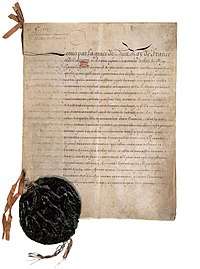
The first Stuart monarch, James VI and I, created a vision of a centralised state, run by a monarch whose authority came from God and where the function of Parliament, bishops or elders was to obey.[23] His successors ruled without Parliament for long periods, using the Royal Prerogative instead; legislation passed in this way could be withdrawn as and when the king decided.[24]
17th century society was extremely structured, and most Tories viewed James' Catholicism as less important than the principle of hereditary succession. In addition, he had sworn to uphold the supremacy of the Church of England in an age when such things mattered. Five of the seven bishops prosecuted in 1688 refused to swear allegiance to William and Mary, because they felt bound by their previous oath. Tolerance was viewed as undermining this principle and Parliament refused to approve, despite being "the most Loyal Parliament a Stuart ever had".[25]
Catholicism in general was associated with the absolutist policies of Louis XIV, while the Edict of Fontainebleau in October 1685 revoked tolerance for French Protestants. Over the next four years, an estimated 200,000 – 400,000 French Huguenots went into exile, 40,000 of whom settled in London.[26] Combined with the killing of 2,000 Vaudois Protestants in 1686, the edict led to fears that Protestant Europe was threatened by a Catholic counter-reformation.[27]
These concerns were reinforced by events in Ireland. Talbot wanted to create a Catholic establishment able to survive James' death, which meant replacing Protestant officials, but at a pace that was inherently destabilising. For many, land reform was as important as religion; it divided the Catholic Old English elite such as Talbot, who benefited from the 1662 Land Settlement, and the Gaelic Irish, who largely did not.[28] These tensions resurfaced in the 1689 Patriot Parliament, which many Jacobites criticised as failing to meet the needs of all Irish Catholics.[29]
Historians generally accept that James wished to promote Catholicism, not establish an absolutist state, but his stubborn and inflexible reaction to opposition had the same result. When the English and Scottish Parliaments refused to repeal the 1678 and 1681 Test Acts, he dismissed them and ruled by decree. His attempts to form a 'King's party' of Catholics, English Dissenters and dissident Scottish Presbyterians rewarded those who backed the 1685 rebellions, while undermining those who had supported him.[30]
Timeline of events: 1686 to 1688
His supporters wanted stability and the rule of law, but James often appeared to undermine them. After suspending Parliament in November 1685, he sought to rule by decree or 'dispense'; judges who disagreed were dismissed and his right confirmed in April 1686. The principle was well established; the scope and approach caused considerable concern.[31]
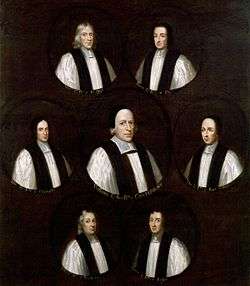
This was followed by actions viewed as attacks on the Church of England; Henry Compton, Bishop of London, was suspended for refusing to ban John Sharp from preaching after he gave an anti-Catholic sermon.[32] The Commission for Ecclesiastical Causes, set up to regulate the church included suspected Catholics, like the Earl of Huntingdon.[33]
In addition, James frequently made things worse by an inability to accept opposition. In April 1687, he ordered the fellows of Magdalen College, Oxford to elect Anthony Farmer as president. His right to do so was not challenged, but Farmer was ineligible under the college statutes, and John Hough was elected instead. Farmer withdrew, and Hough was replaced by the Bishop of Oxford, but James also demanded that the fellows apologise for 'defying' him; when they refused, they were replaced by Catholics.[34]
Creating a 'Kings Party' of Catholics and Dissenters ignored the fact that neither group was significant in numbers; by 1680, Catholics formed 1.1 percent of the English population, Dissenters 4.4 percent.[35] In Scotland the numbers were even lower; combined with 'occasional conformity', this meant in practice private worship was already tolerated.[36] Both groups were also divided; moderate Catholics feared a potential backlash, particularly when thousands of French Huguenot refugees arrived in London. Among the Dissenters Quakers and Congregationalists supported repeal of the Test Acts; others wanted to amend the 1662 Act of Uniformity and re-enter the Church of England.[37]
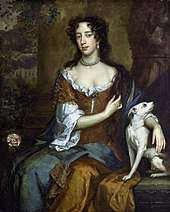
Even those who benefited did not trust James; in 1687, he nominated the Dissenter Sir John Shorter as Lord Mayor of London. Before taking office, Sir John insisted on complying with the Test Act, even taking Anglican communion; he reportedly did so due to a 'distrust of the King's favour...thus encouraging that which His Majesties whole Endeavours were intended to disannull.'[38]
To ensure a Parliament that would vote for his Declaration of Indulgence, James made sweeping changes to local government, the power base for many Tories. Candidates for Members of Parliament had to be approved by their local Lord Lieutenant; eligibility for both offices required positive answers to the 'Three Questions', including a commitment to repeal the Test Act, and those giving negative answers dismissed.[39] James relied on an increasingly narrow support base; government positions and town corporations were purged to create an electoral machine that would return only supporters of Royal authority.[40] Finally, on 24 August 1688, James ordered writs issued for a general election.[41]
The expansion of the military in all three kingdoms caused great concern, particularly in England and Scotland, where the civil war left huge resistance to standing armies.[42] In Ireland Talbot replaced Protestant officers with Catholics; James did the same in England, while his basing the troops at Hounslow appeared to be a deliberate attempt to overawe Parliament.[43] By 1688 the army numbered over 34,000 men; for comparison: the Tory-dominated Parliament of 1698 approved an army of 7,000.
In April 1688 James re-issued the Declaration of Indulgence and ordered it read in every church; when the Archbishop of Canterbury, head of the Church of England, and six other bishops asked him to reconsider, they were arrested on charges of seditious libel and confined in the Tower of London. Two events turned dissent into a crisis; the birth of James Francis Edward on 10 June created the prospect of a Catholic dynasty, while the acquittal of the Seven Bishops on 30th destroyed James' political authority.[44]
Dutch intervention
Prelude: 1685 to June 1688
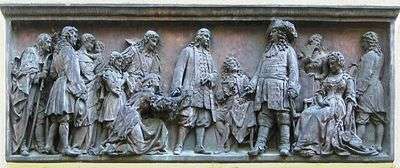
In 1677, James' daughter and heir Mary married her Protestant cousin William of Orange, stadtholder of the main provinces of the Dutch Republic. Both men shared common objectives in wishing to see Mary succeed her father, while French ambitions in the Spanish Netherlands threatened both English and Dutch trade.[45] This led William to lend James the Anglo-Scots Brigade during the 1685 Monmouth Rebellion but their relationship deteriorated thereafter.[46]
While the States General preferred peace, memories of the 1672 French invasion and murder of the de Witt brothers meant they accepted that war might be inevitable. Dutch public opinion also began to move in that direction, largely due to the October 1685 expulsion of French Protestants or Huguenots, which sent an estimated 200,000 into exile. Followed by the killing of around 2,000 Vaudois Protestants in 1686, this stoked fears that Protestant Europe was threatened by a Catholic counter-reformation.[27] Frederick William invited Huguenot refugees to settle in Brandenburg and replaced his French alliance for one with the Dutch, who now joined the anti-French League of Augsburg.[47]
.jpg)
The Dutch believed they could not resist a combined Anglo-French attack and were reluctant to rely on James' assurances of neutrality.[48] Mutual suspicion was increased by the fact that many of William's advisers were English and Scots exiles, the latter with close links to the Protestant minority in Ireland, who felt particularly threatened by a Catholic resurgence. James relied on an ever-smaller circle of counsellors, chiefly the Earl of Sunderland and Catholic converts such as Melfort and Perth.[49] After a naval clash with the French in July 1686, William concluded that neutrality was insufficient and that the Republic needed active support from the Royal Navy.[50]
When James sought William's support for repeal of the Test Acts, he predictably refused, further damaging their relationship.[51] Having assumed his marriage guaranteed English support in a war with France, William began to fear it might even be used against him. James assured Everhard van Weede Dijkvelt that rumours of a French alliance were false, but failed to appreciate the distrust caused by his domestic policies.[52] In August 1687, William's cousin de Zuylestein travelled to England with condolences on the death of Mary of Modena's mother, allowing him to make contact with the political opposition.[53]
After fourteen years of marriage and multiple miscarriages, in October it was announced the Queen was pregnant. Melfort immediately declared that it was a boy, while James sent his daughter Mary a letter urging her to convert to Catholicism; this convinced many he was seeking a Catholic heir, one way or the other.[54] It is suggested this was the key factor in William's decision to invade England.[55]
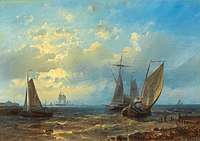
Early in 1688, a pamphlet titled The Letter circulated in England, composed by Grand Pensionary Gaspar Fagel, who handled the Dutch foreign affairs.[56] This claimed to be a response to arguments in support of repeal by James Stewart; a Presbyterian radical and exile, in 1692 he was appointed Lord Advocate by William and was almost certainly a double agent.[57] Fagel guaranteed freedom of worship but retained the Test Acts, which many Dissenters viewed as essential and undercut James, who offered tolerance but only in return for repeal.[58] English supporters provided William with detailed information on public opinion and developments, very little of which was intercepted.[59]
With a European war inevitable, securing or neutralising English resources was vital for both the Dutch and French. In April 1688, Louis XIV announced new tariffs on Dutch herring imports and plans to support the Royal Navy in the Channel. This was largely a gesture, as it required moving units from the Mediterranean, but viewing it as the prelude to a formal alliance between England and France, William and his supporters began to prepare a military intervention.[60] On the pretext of fighting French privateers, in July the States General approved recruiting an additional 9,000 sailors and construction of 21 new warships.[61]
William seeks English commitment to an invasion
William laid careful plans over a number of months for an invasion, which he hoped to execute in September 1688. William would not invade England without assurances of English support, and so in April, he asked for a formal invitation to be issued by a group of leading English statesmen. Gilbert Burnet recorded a conversation at the end of April between William and Admiral Edward Russell:
So Russell put the Prince to explain himself what he intended to do. The Prince answered, that, if he was invited by some men of the best interest, and the most valued in the nation, who should both in their own name, and in the name of others who trusted them, invite him to come and rescue the nation and the religion, he believed he could be ready by the end of September to come over.
— Gilbert Burnet.[62]
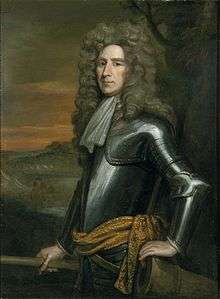
In May, Russell told William that the English opposition to James would not wait any longer for help and they would rise against James in any event. William feared that if he did not now head the conspiracy the English would set up a republic, even more inimical to the Dutch state.[63] In June, William sent Count Zuylestein to England, ostensibly to congratulate James on the birth of the Prince of Wales but in reality to communicate with William's associates.[64]
Only after the Prince of Wales had been born in June, however, and many suspected he was supposititious,[lower-alpha 1] did the Immortal Seven (who consisted of one bishop and six nobles) decide to comply, with the letter to William dated 18 June (Julian calendar),[lower-alpha 2] reaching him in The Hague on 30 June, and dispatched by Rear Admiral Herbert, disguised as a common sailor. The Seven consisted of Lord Shrewsbury, Lord Devonshire, Lord Danby, Lord Lumley, Henry Compton, Edward Russell, and Henry Sydney. The invitation declared:
We have great reason to believe, we shall be every day in a worse condition than we are, and less able to defend ourselves, and therefore we do earnestly wish we might be so happy as to find a remedy before it be too late for us to contribute to our own deliverance ... the people are so generally dissatisfied with the present conduct of the government, in relation to their religion, liberties and properties (all which have been greatly invaded), and they are in such expectation of their prospects being daily worse, that your Highness may be assured, there are nineteen parts of twenty of the people throughout the kingdom, who are desirous of a change; and who, we believe, would willingly contribute to it, if they had such a protection to countenance their rising, as would secure them from being destroyed.
— invitation by The Seven.[65]
The Seven went on to claim that "much the greatest part of the nobility and gentry" were dissatisfied and would rally to William, and that James's army "would be very much divided among themselves; many of the officers being so discontented that they continue in their service only for a subsistence ... and very many of the common soldiers do daily shew such an aversion to the Popish religion, that there is the greatest probability imaginable of great numbers of deserters ... and amongst the seamen, it is almost certain, there is not one in ten who would do them any service in such a war".[66] The Seven believed that the situation would be much worse before another year due to James's plans to remodel the army by the means of a packed Parliament or, should the parliamentary route fail, through violent means which would "prevent all possible means of relieving ourselves".[67] The Seven also promised to rally to William upon his landing in England and would "do all that lies in our power to prepare others to be in as much readiness as such an action is capable of".[68]
Meanwhile, William's confidante Willem Bentinck launched a propaganda campaign in England. In the numerous pamphlets distributed, William was presented in the best possible light; as a true Stuart yet blessedly free from the usual Stuart vices of crypto-Catholicism, absolutism, and debauchery. Much of the later "spontaneous" support for William had been carefully organised by Bentinck and his agents.[69]
In August, it became clear that William had surprisingly strong support within the English army, a situation brought about by James himself. In January 1688 he had forbidden any of his subjects to serve the Dutch and had demanded that the Republic dissolve its six mercenary Scottish and English regiments. When this was refused, he asked that at least those willing would be released from their martial oath to be free to return to Britain. To this William consented as it would purify his army of Jacobite elements. In total 104 officers and 44 soldiers returned. The officers were enlisted within the British armies and so favoured that the established officer corps began to fear for its position. On 14 August Lord Churchill wrote to William: "I owe it to God and my country to put my honour into the hands of Your Highness". Nothing comparable happened within the Royal Navy, however; claims after the event by certain captains that they had somehow prevented the English fleet from engaging seem to have been little more than attempts at self-aggrandisement.[70]
Dutch preparations: July to September 1688
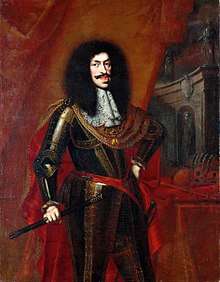
For William, securing English resources was essential to containing French expansion, a strategic objective not shared by many of his English backers. Support from Emperor Leopold was another key element.
In 1672, an alliance with the Electorate of Cologne [lower-alpha 3] had enabled France to bypass Dutch forward defences and nearly over-run the Republic. To avoid a repetition, diplomatic steps were taken to secure their eastern borders. As it was an ecclesiastical principality of the Holy Roman Empire, Cologne's ruler was nominated by Pope Innocent XI, then in dispute with both Louis and James over the right to appoint Catholic bishops and clergy.[71] When the old Elector died in June 1688, Innocent and Emperor Leopold ignored the French candidate in favour of Joseph Clemens of Bavaria.[72]
The 1683 to 1684 War of the Reunions, demands in the Palatinate and construction of forts at Landau and Traben-Trarbach indicated continued French expansion into the Rhineland.[73] This presented an existential threat to Habsburg dominance, guaranteeing Leopold's support, while also negating French attempts to build German alliances.[74] William's envoy Johann von Görtz gave Leopold guarantees English Catholics would not be persecuted and claimed intervention was to elect a free Parliament, not depose James. A convenient fiction that ensured his neutrality, Leopold promised to end his current campaign against the Ottoman Empire as soon as possible and free his forces for a western campaign.
Although his English supporters considered a token force sufficient, William assembled a force of 260 transport ships and 14,000 men, nearly half of the 30,000 strong Dutch States Army. Given French preparations for war, their absence was of great concern to the States General and Bentinck hired 13,616 German mercenaries to man Dutch border fortresses, freeing elite units like the Scots Brigade for use in England.[75] The increase could be presented as a limited precaution against French aggression, as the Dutch would typically double or triple their army strength in wartime; William instructed his experienced deputy Schomberg to prepare for a Western campaign.[76]
Decision to invade
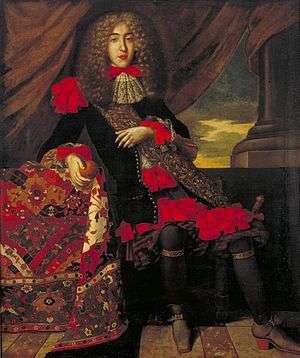
At the beginning of September, an invasion remained in the balance. The Dutch political establishment remained unconvinced and feared a French attack via Flanders while their army was in England. Lord Danby suggested a postponement and William was on the brink of abandoning the entire project when French policy played into his hand.
The surrender of Belgrade on 6 September seemed to presage an Ottoman collapse that would release Austrian resources for use in Germany. Hoping to act before Leopold could respond and keep the Ottomans in the war, Louis decided to attack Philippsburg.[77] To ensure James could survive without direct support, he attempted to intimidate the States-General. On 9 September, French envoy D'Avaux handed them two letters; the first warned an attack on James meant war with France, the other that interference with French operations in Germany would end with the destruction of the Dutch state.[78]
Both misfired; convinced Louis was trying to drag him into war, James told the States General there was no secret Anglo-French alliance against them, but his denials increased their suspicions. The second letter confirmed France's primary objective was the Rhineland and allowed William to move his army from the eastern border to the coast, even though most of the new mercenaries had yet to arrive.[79] War was now unavoidable; on 22 September, Louis ordered the confiscation of over 100 Dutch ships in French ports, with French troops crossing into Germany on 27th.[80]
.jpg)
The States of Holland was the most powerful political body in the Dutch Republic, contributing nearly 60% of its budget; this in turn was dominated by the Amsterdam city council, who agreed to back William on 26 September. In a secret session held on 29 September, William argued for a pre-emptive strike, as Louis and James would "attempt to bring this state to its ultimate ruin and subjugation, as soon as they find the occasion". This was accepted by the States, with the objective left deliberately vague, other than making the English "King and Nation live in a good relation, and useful to their friends and allies, and especially to this State". Following their approval, the Amsterdam financial market raised a loan of four million guilders in only three days.[81] Further financing was obtained from a variety of sources, including two million guilders from the banker Francisco Lopes Suasso.[82] When asked what security he desired, Suasso allegedly answered: "If you are victorious, you will surely repay me; if not, the loss is mine."[83]
The biggest concern for the States of Holland was the impact on the Dutch economy and politics of William becoming ruler of England; the claim he had no intention of "removing the King from the throne" was not believed. Their fears were arguably justified; William's access to English resources permanently diminished Amsterdam's power within the Republic and its status as the world's leading commercial and financial centre.[84]
Officially, the invasion was a private affair, the States General allowing William use of the Dutch army and fleet.[74] For propaganda purposes, English admiral Arthur Herbert was temporarily made Lieutenant-Admiral-General and nominal commander of the 53 warships that served as escorts. In reality, operational control was exercised by Lieutenant-Admiral Cornelis Evertsen the Youngest and Vice-Admiral Philips van Almonde.[85] William, accompanied by Willem Bastiaensz Schepers, the Rotterdam shipping magnate who organised the transport fleet, travelled on board the newly built frigate Den Briel, rather than one of the larger vessels.[86]
English defensive strategy
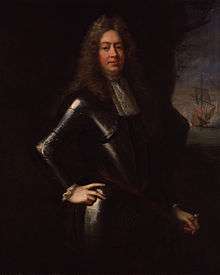
The primary concern for James was to avoid war. He and Sunderland interpreted efforts by Louis to intimidate the Dutch and provide intelligence on William's plans as attempts to drag him into an unwanted French alliance. As a former naval commander, James appreciated the difficulties of a successful invasion, even in good weather; as they neared the end of September, the likelihood seemed to diminish. He refused to believe the States would allow William to make the attempt and even if they did, considered the English army and navy strong enough to defeat it.[87]
Reasonable in theory, in reality each assumption was deeply flawed, one of the most fundamental being the loyalty and efficiency of his army and navy. In July, the fleet nearly mutinied when Catholic Mass was held on one of the ships, only averted when James went in person to pacify the sailors. Despite efforts to fill the army with Catholics, it remained overwhelmingly Protestant and enthusiastically celebrated the acquittal of the bishops. Officers in one of his most reliable units, commanded by his illegitimate son, the Duke of Berwick, refused to accept Catholic recruits. When they were dismissed, most of their colleagues resigned in sympathy and the episode further undermined the army's morale.[88]
With a paper strength of 34,000, the army looked impressive but in comparison to the veterans of William's invasion force, many were untrained or lacked weapons. It also had to fill policing roles previously delegated to the militia, which had been deliberately allowed to decay; most of the 4,000 regular troops brought from Scotland were stationed in London to keep order. In October, attempts were made to restore the militia but many members were reportedly so angry at the changes made to local corporations, James was advised it was better not to raise them.[89]
This was particularly apparent in Yorkshire and South-West England, the two landing places identified by William. One of the key army conspirators along with Churchill was Charles Trelawny, a West Country Tory whose brother was one of the Seven Bishops. His commitment confirmed support from a powerful and well-connected bloc, allowing access to the ports of Plymouth and Torbay. In the north, Lord Danby prepared to seize York, the most important city in Northern England, and Hull, its largest port.[90]
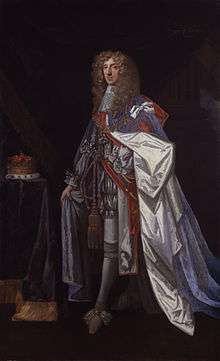
Dartmouth replaced Herbert as commander of the fleet when he defected in June but many captains owed him their appointments and were of doubtful loyalty. Dartmouth suspected Berkeley and Grafton of plotting to overthrow him; he placed their ships next to his to monitor them, while minimising contact between the other vessels to prevent conspiracy.[91] Lack of money severely impacted capability; exclusive of fireships and light scouting vessels, Admiralty returns show only 16 warships available in early October, all third rates or fourth rates, short of both men and supplies.[92]
The Downs was the best place to intercept a cross-Channel attack but it was also vulnerable to a surprise assault, even for ships fully manned and adequately provisioned. Instead, the fleet was positioned in front of the Medway, near Chatham Dockyard, although it risked being confined to the Thames estuary by the same easterly winds that would allow the Dutch to cross. Since James believed the Dutch would seek to destroy the English fleet prior to an invasion, it would be advantageous to refuse battle, a strategic concept known as the fleet in being.[93] This was indeed the original Dutch plan – though they too, to lower the cost of the invasion, had not activated any heavier ships – but as they moved into autumn, conditions deteriorated rapidly for those on the transports; they therefore decided to sail in convoy and avoid battle.[94]
The English fleet was outnumbered 2:1 by the Dutch, undermanned, in poor condition and the wrong location. Key landing locations in the South-West and Yorkshire had been secured by sympathisers, while both army and navy were led by officers whose loyalty was questionable. William claimed to be ensuring the rights of Parliament and James' daughter Mary and even in July 1686, many foreign observers doubted the military's reliability against a Protestant heir. The invasion remained a dangerous undertaking but less risky than it seemed.[95]
Invasion
Embarkation of the army and the Declaration of The Hague
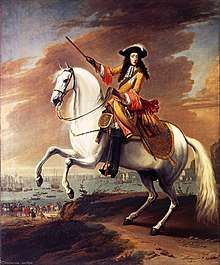
The Dutch preparations, though carried out with great speed, could not remain secret. The English envoy Ignatius White, the Marquess d'Albeville, warned his country: "an absolute conquest is intended under the specious and ordinary pretences of religion, liberty, property and a free Parliament". Louis XIV threatened the Dutch with an immediate declaration of war, should they carry out their plans. Embarkations, started on 22 September (Gregorian calendar), had been completed on 8 October, and the expedition was that day openly approved by the States of Holland; the same day James issued a proclamation to the English nation that it should prepare for a Dutch invasion to ward off conquest. On 30 September/10 October (Julian/Gregorian calendars) William issued the Declaration of The Hague (actually written by Fagel), of which 60,000 copies of the English translation by Gilbert Burnet were distributed after the landing in England,[96][97] in which he assured that his only aim was to maintain the Protestant religion, install a free parliament and investigate the legitimacy of the Prince of Wales. He would respect the position of James. William declared:
It is both certain and evident to all men, that the public peace and happiness of any state or kingdom cannot be preserved, where the Laws, Liberties, and Customs, established by the lawful authority in it, are openly transgressed and annulled; more especially where the alteration of Religion is endeavoured, and that a religion, which is contrary to law, is endeavoured to be introduced; upon which those who are most immediately concerned in it are indispensably bound to endeavour to preserve and maintain the established Laws, Liberties and customs, and, above all, the Religion and Worship of God, that is established among them; and to take such an effectual care, that the inhabitants of the said state or kingdom may neither be deprived of their Religion, nor of their Civil Rights.
William went on to condemn James's advisers for overturning the religion, laws, and liberties of England, Scotland, and Ireland by the use of the suspending and dispensing power; the establishment of the "manifestly illegal" commission for ecclesiastical causes and its use to suspend the Bishop of London and to remove the Fellows of Magdalen College, Oxford. William also condemned James's attempt to repeal the Test Acts and the penal laws through pressuring individuals and waging an assault on parliamentary boroughs, as well as his purging of the judiciary. James's attempt to pack Parliament was in danger of removing "the last and great remedy for all those evils". "Therefore", William continued, "we have thought fit to go over to England, and to carry over with us a force sufficient, by the blessing of God, to defend us from the violence of those evil Counsellors ... this our Expedition is intended for no other design, but to have, a free and lawful Parliament assembled as soon as is possible".[99]
On 4/14 October William responded to the allegations by James in a second declaration, denying any intention to become king or conquer England. Whether he had any at that moment is still controversial.[100]
The swiftness of the embarkations surprised all foreign observers. Louis had in fact delayed his threats against the Dutch until early September because he assumed it then would be too late in the season to set the expedition in motion anyway, if their reaction proved negative; typically such an enterprise would take at least some months.[101] Being ready after the last week of September / first week of October would normally have meant that the Dutch could have profited from the last spell of good weather, as the autumn storms tend to begin in the third week of that month. This year they came early however. For three weeks the invasion fleet was prevented by adverse south-westerly gales from departing from the naval port of Hellevoetsluis and Catholics all over the Netherlands and the British kingdoms held prayer sessions that this "popish wind" might endure. However, on 14/24 October it became the famous "Protestant Wind" by turning to the east.[102]
Crossing and landing
On 16/26 October William boarded his ship, the Den Briel (Brill in English). His standard was hoisted, displaying the arms of Nassau quartered with those of England. The words Pro Religione et Libertate ("For Liberty and [the Protestant] Religion"), the slogan of William's ancestor William the Silent while leading the Dutch Revolt against Catholic Spain, were shown next to the House of Orange's motto, Je maintiendrai ("I will maintain").[103] William's fleet, which with about 40,000 men aboard was roughly twice the size of the Spanish Armada – and assembled in a tenth of the time – consisted of 463 ships.[101] Among these were 49 warships of more than twenty cannon (eight could count as third rates of 60–68 cannon, nine were frigates), 28 galliots, nine fireships, 76 fluyts to carry the soldiers, 120 small transports to carry five thousand horses, about seventy supply vessels and sixty fishing vessels serving as landing craft.[104][105] Most of the warships had been provided by the Admiralty of Amsterdam. On 19/29 October William's fleet departed from Hellevoetsluis. The fleet was approximately halfway between the Republic and England when the wind changed to the northwest and a gale scattered the fleet, with the Brill returning to Hellevoetsluis on 21/31 October. Despite suffering from sea-sickness William refused to go ashore and the fleet reassembled, having lost only one ship that grounded,[106] though about a thousand crippled horses had been thrown into the sea.[107] Press reports were released that deliberately exaggerated the damage and claimed the expedition would be postponed till the spring.[108] English naval command now considered to try blockading Hellevoetsluis but decided against it because it was feared that the English fleet would founder on the Dutch coast, a dangerous lee shore for a blocking force, by the stormy weather.[109]
Taking advantage of a wind again turned to the east, resupplied and re-equipped with new horses, the invasion fleet departed again on 1/11 November and sailed north in the direction of Harwich where Bentinck had a landing site prepared. The fleet changed course to the south however when the wind turned more to the north; it has been suggested that the initial move to the north was a feint and indeed James diverted some of his forces in that direction.[108] Thus they passed twice in sight of the English fleet, which was unable to intercept because of the adverse wind and an unfavourable tide.[70] On 3/13 November the invasion fleet entered the English Channel through the Strait of Dover in an enormous square formation, 25 ships deep, the right and left of the fleet saluting Dover and Calais simultaneously, to show off its size. The troops were lined up on deck, firing musket volleys, with full colours flying and the military bands playing. Rapin de Thoyras, who was on board one of the ships, described it as the most magnificent and affecting spectacle that was ever seen by human eyes. William intended to land at Torbay but due to fog the fleet sailed past it by mistake. The wind made a return impossible and Plymouth was unsuitable as it had a garrison. At this point, with the English fleet in pursuit, Russell told Burnet: "You may go to prayers, Doctor. All is over". At that moment however the wind changed and the fog lifted, enabling the fleet to sail into Torbay, near Brixham, Devon. William came ashore on 5/15 November.[110] When Burnet was ashore he hastened to William and eagerly enquired what William now intended to do. William regarded the interference in military matters by non-military personnel with disgust but he was in good humour at this moment and responded with a delicate reproof: "Well, Doctor, what do you think of predestination now?"[111] The English squadron under Lord Dartmouth was forced by the same change in wind to shelter in Portsmouth harbour.[111] During the next two days William's army disembarked in calm weather.[70]
William brought over 11,212 horse and foot. William's cavalry and dragoons amounted to 3,660.[112] His artillery train contained 21 24-pounder cannon. Including the supply train, his force consisted of about 15,000 men,[113] compared to James's total forces of about 30,000.[114][115] He also brought 20,000 stand of arms to equip his English supporters.[104] The Dutch army was composed mostly of foreign mercenaries; there were Dutch, Scots, English, German, Swiss, and Swedish regiments, even Laplanders[101] as well as "200 Blacks brought from the Plantations of the Netherlands in America",[116] thus from the colony of Surinam. Many of the mercenaries were Catholic.[117] William had his personal guard regiment with him, the Dutch Blue Guards. In response to the threat James had raised five new regiments of foot and five of horse, as well as bringing in Scottish and Irish soldiers. Louis XIV also sent James 300,000 livres.[118]
The French fleet remained at the time concentrated in the Mediterranean, to assist a possible attack on the Papal State.[101] Louis delayed his declaration of war until 16/26 November hoping at first that their involvement in a protracted English civil war would keep the Dutch from interfering with his German campaign. The same day a second attempt by Legge to attack the landing site again failed by an adverse southwestern gale.[70] The Dutch call their fleet action the Glorieuze Overtocht, the "Glorious Crossing".[119]
William consolidates his position
William considered his veteran army to be sufficient in size to defeat any forces (all rather inexperienced) that James could throw against him, but it had been decided to avoid the hazards of battle and maintain a defensive attitude in the hope James's position might collapse by itself. Thus he landed far away from James's army, expecting that his English allies would take the initiative in acting against James while he ensured his own protection against potential attacks. William was prepared to wait; he had paid his troops in advance for a three-month campaign. A slow advance, apart from being necessitated by heavy rainfall anyway, had the added benefit of not over-extending the supply lines; the Dutch troops were under strict orders not even to forage, for fear that this would degenerate into plundering, which would alienate the population.
On 9 November (Julian calendar) William took Exeter after the magistrates had fled the city, entering on a white palfrey, with the two hundred black men forming a guard of honour, dressed in white, with turbans and feathers.[120] In the South support from the local gentry was disappointingly limited,[121] but from 12 November, in the North, many nobles began to declare for William, as they had promised, often by a public reading of the Declaration.[122] In Yorkshire, printer John White started to print the same document for a more widespread distribution.[123] However, in the first weeks most people carefully avoided taking sides; as a whole the nation neither rallied behind its king, nor welcomed William, but passively awaited the outcome of events. In general, the mood was one of confusion, mutual distrust and depression.[121]
The collapse of James's rule
James refused a French offer to send an expeditionary force, fearing that it would cost him domestic support. He tried to bring the Tories to his side by making concessions but failed because he still refused to endorse the Test Act. His forward forces had gathered at Salisbury, and James went to join them on 19 November with his main force, having a total strength of about 19,000. Amid anti-Catholic rioting in London, it rapidly became apparent that the troops were not eager to fight, and the loyalty of many of James' commanders was doubtful; he had been informed of the conspiracy within the army as early as September, but for unknown reasons had refused to arrest the officers involved. Some have argued, however, that if James had been more resolute, the army would have fought and fought well.[124]
The first blood was shed at about this time in a skirmish at Wincanton, Somerset, where Royalist troops under Patrick Sarsfield retreated after defeating a small party of scouts; the total body count on both sides came to about fifteen. In Salisbury, after hearing that some officers had deserted, among them Lord Cornbury, a worried James was overcome by a serious nose-bleed that he interpreted as an evil omen indicating that he should order his army to retreat, which the supreme army commander, the Earl of Feversham, also advised on 23 November. The next day, Lord Churchill, one of James' chief commanders, deserted to William.[lower-alpha 4] On 26 November, James's younger daughter, Anne, who doubted the authenticity of her new brother,[126] and who was greatly influenced by Churchill's wife Sarah Churchill, did the same. Both were serious losses. James returned to London that same day. On 27 November he met with all the Lords Spiritual and Temporal who were then in London.[127]
Meanwhile, on 18 November Plymouth had surrendered to William, and on 21 November he began to advance.[128] By 24 November, William's forces were at Sherborne and on 1 December at Hindon. On 4 December he was at Amesbury, and was received by the mayor of Salisbury;[128] three days later they had reached Hungerford, where the following day they met with the King's Commissioners to negotiate. James offered free elections and a general amnesty for the rebels. In reality, by that point James was simply playing for time, having already decided to flee the country. He feared that his English enemies would insist on his execution and that William would give in to their demands. Convinced that his army was unreliable, he sent orders to disband it. On 9 December, the two sides fought a second engagement with the Battle of Reading, a defeat for the King's men.
In December, there was anti-Catholic rioting in Bristol, Bury St. Edmunds, Hereford, York, Cambridge, and Shropshire. On 9 December a Protestant mob stormed Dover Castle, where the Catholic Sir Edward Hales was governor, and seized it. On 8 December William met at last with James's representatives; he agreed to James's proposals but also demanded that all Catholics be immediately dismissed from state functions and that England pay for the Dutch military expenses. He received no reply, however.
Departure of King and Queen
In the night of 9/10 December, the Queen and the Prince of Wales fled for France. The next day saw James's attempt to escape, the King dropping the Great Seal in the Thames along the way, as no lawful Parliament could be summoned without it.[129] However, he was captured on 11 December by fishermen in Faversham opposite Sheerness, the town on the Isle of Sheppey. On the same day, 27 Lords Spiritual and Temporal, forming a provisional government, decided to ask William to restore order but at the same time asked the king to return to London to reach an agreement with his son-in-law. It was presided over initially by William Sancroft, Archbishop of Canterbury and, after it was learned that James was still in England, by George Savile, 1st Marquess of Halifax.[130][127] On the night of 11 December there were riots and lootings of the houses of Catholics and several foreign embassies of Catholic countries in London. The following night a mass panic gripped London during what was later termed the Irish night. False rumours of an impending Irish army attack on London circulated in the capital, and a mob of over 100,000 assembled ready to defend the city.
Upon returning to London on 16 December, James was welcomed by cheering crowds. He took heart at this and attempted to recommence government, even presiding over a meeting of the Privy Council.[131][lower-alpha 5] He sent the Earl of Feversham to William to arrange for a personal meeting to continue negotiations. Now it became evident that William had no longer any desire to keep James in power in England. He was extremely dismayed by the arrival of Lord Feversham. He refused the suggestion that he simply arrest James because this would violate his own declarations and burden his relationship with his wife. In the end it was decided that he should exploit James's fears; the three original commissioners were sent back to James with the message that William felt he could no longer guarantee the king's well-being and that James for his own safety had better leave London for Ham.
William at the same time ordered all English troops to depart from the capital, while his forces entered on 17 December; no local forces were allowed within a twenty-mile radius until the spring of 1690. Already the English navy had declared for William. James, by his own choice, went under Dutch protective guard to Rochester in Kent on 18 December, just as William entered London, cheered by crowds dressed in orange ribbons or waving, lavishly distributed, oranges.[132] The Dutch officers had been ordered that "if he [James] wanted to leave, they should not prevent him, but allow him to gently slip through".[133] James then left for France on 23 December after having received a request from his wife to join her, even though his followers urged him to stay. The lax guard on James and the decision to allow him so near the coast indicate that William may have hoped that a successful flight would avoid the difficulty of deciding what to do with him, especially with the memory of the execution of Charles I still strong. By fleeing, James ultimately helped resolve the awkward question of whether he was still the legal king or not, having created according to many a situation of interregnum.[129]
William and Mary made joint monarchs
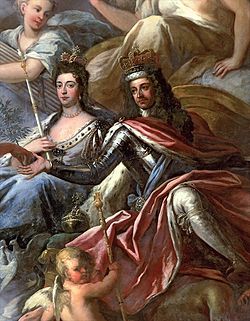
On 28 December, William took over the provisional government by appointment of the peers of the realm, as was the legal right of the latter in circumstances when the king was incapacitated, and, on the advice of his Whig allies, summoned an assembly of all the surviving members of parliament of Charles II's reign, thus sidelining the Tories of the Loyal Parliament of 1685. This assembly called for a chosen English Convention Parliament, elected on 5 January 1689 NS,[lower-alpha 2] which convened on 22 January. William did not intervene in the election that followed. This elected body consisted of 513 members, 341 of whom had been elected before, 238 having been members of at least one Exclusion Bill Parliament, but only 193 having been elected in 1685.[134] The name "Convention" was chosen because only the king could call a Parliament, although as William had been appointed de facto regent by the peers the convention could be argued to be, strictly speaking, a lawful Parliament.
Although James had fled the country, he still had many followers, and William feared that the king might return, relegating William to the role of a mere regent, an outcome which was unacceptable to him. On 30 December, William, speaking to the Marquess of Halifax, threatened to leave England "if King James came again" and determined to go back to the Netherlands "if they went about to make him Regent".[135]
The English Convention Parliament was very divided on the issue. The radical Whigs in the Lower House proposed to elect William as a king (meaning that his power would be derived from the people); the moderates wanted an acclamation of William and Mary together; the Tories wanted to make him regent or only acclaim Mary as queen. On 28 January a committee of the whole House of Commons promptly decided by acclamation that James had broken "the original contract"; had "abdicated the government"; and had left the throne "vacant".[136] The House of Lords wished to amend this, however, as many were still loyal to James and believed in the Anglican doctrine of non-resistance. The Lords rejected the proposal for a regency in James's name by 51 to 48 on 2 February. The Lords also replaced the word "abdicated" by "deserted" and removed the "vacancy" clause. The Lords voted against proclaiming William and Mary monarchs by 52 to 47. On 4 February the Lords reaffirmed their amendments to the Commons's resolution by 55 to 51 and 54 to 53.[137] On 5 February the Commons voted 282 to 151 for maintaining the original wording of the resolution. The next day, the two Houses entered into a conference but failed to resolve the matter. William in private conversation (with Halifax, Danby, Shrewsbury, Lord Winchester and Lord Mordaunt) made it clear that they could either accept him as king or deal with the Whigs without his military presence, for then he would leave for the Republic. But he let it be known that he was happy for Mary to be nominal monarch and preference in the succession given to Anne's children over his by a subsequent marriage. Anne declared that she would temporarily waive her right to the crown should Mary die before William, and Mary refused to be made queen without William as king. The Lords on 6 February now accepted the words "abdication" and "vacancy" and Lord Winchester's motion to appoint William and Mary monarchs.[138] Generally there was a great fear that the situation might deteriorate into a civil war.[139]

The Bill of Rights
The proposal to draw up a statement of rights and liberties and James's invasion of them was first made on 29 January in the Commons, with members arguing that the House "can not answer it to the nation or Prince of Orange till we declare what are the rights invaded" and that William "cannot take it ill if we make conditions to secure ourselves for the future" to "do justice to those who sent us hither". On 2 February a committee specially convened reported to the Commons 23 Heads of Grievances, which the Commons approved and added some of their own. However, on 4 February the Commons decided to instruct the committee to differentiate between "such of the general heads, as are introductory of new laws, from those that are declaratory of ancient rights". On 7 February the Commons approved this revised Declaration of Right, and on 8 February instructed the committee to put into a single text the Declaration (with the heads which were "introductory of new laws" removed), the resolution of 28 January and the Lords' proposal for a revised oath of allegiance. It passed the Commons without division.[140]
The Declaration of Right was in December 1689 enacted in an Act of Parliament, the Bill of Rights 1689. It listed twelve of James's policies by which James designed to "endeavour to subvert and extirpate the protestant religion, and the laws and liberties of this kingdom".[141] These were:
- by assuming and exercising a power of dispensing with and suspending of laws;
- by prosecuting the Seven Bishops;
- by establishing of the court of commissioners for ecclesiastical causes;
- by levying money for the crown by pretence of prerogative than the same was granted by Parliament;
- by raising and maintaining a standing army in peacetime without the consent of Parliament;
- by disarming Protestants and arming Catholics contrary to law;
- by violating the election of members to serve in Parliament;
- by prosecuting in the King's Bench for matters cognisable only in Parliament and "divers other arbitrary and illegal courses";
- by employing unqualified persons to serve on juries;
- by requiring an excessive bail for persons committed in criminal cases;
- by imposing excessive fines and "illegal and cruel punishments inflicted";
- by making "several grants and promises made of fines and forfeitures before any conviction or judgment against the person, upon whom the same were to be levied".[142]
The Bill of Rights also vindicated and asserted the nation's "ancient rights and liberties" by declaring:
- the pretended power to dispense with or suspend Acts of Parliament is illegal;
- the commission for ecclesiastical causes is illegal;
- levying money without the consent of Parliament is illegal;
- it is the right of the subject to petition the king and prosecutions for petitioning are illegal;
- maintaining a standing army in peacetime without the consent of Parliament is illegal;
- Protestant subjects "may have arms for their defence suitable to their conditions, and allowed by law";
- the election of members of Parliament ought to be free;
- that freedom of speech and debates in Parliament "ought not to be impeached or questioned in any court or place out of Parliament";
- excessive bail and fines not required and "cruel and unusual punishments" not to be inflicted;
- jurors in high treason trials ought to be freeholders;
- that promises of fines and forfeitures before conviction are illegal;
- that Parliament ought to be held frequently.[143]
On 13 February the clerk of the House of Lords read the Declaration of Right, and Halifax, in the name of all the estates of the realm, asked William and Mary to accept the throne. William replied for his wife and himself: "We thankfully accept what you have offered us". They then went in procession to the great gate at Whitehall. The Garter King at Arms proclaimed them King and Queen of England, France and Ireland, whereupon they adjourned to the Chapel Royal, with Compton preaching the sermon.[144] They were crowned on 11 April, swearing an oath to uphold the laws made by Parliament. The Coronation Oath Act 1688 had provided a new coronation oath, whereby the monarchs were to "solemnly promise and swear to govern the people of this kingdom of England, and the dominions thereunto belonging, according to the statutes in parliament agreed on, and the laws and customs of the same". They were also to maintain the laws of God, the true profession of the Gospel, and the Protestant Reformed faith established by law.[145]
Scotland and Ireland
While Scotland played no part in the landing and there was little enthusiasm for William and Mary, by November 1688 only a tiny minority actively supported James.[146] Many of William's advisors were Scots, including Lord Melville, the Duke of Argyll, William Carstares, his personal chaplain and Gilbert Burnet. News of James's flight led to celebrations and anti-Catholic riots in Edinburgh and Glasgow. Most members of the Scottish Privy Council went to London; on 7 January 1689, they asked William to take over government. Elections were held in March for a Scottish Convention, which was also a contest between Presbyterians and Episcopalians for control of the kirk. While only 50 of the 125 delegates were classed as Episcopalian, they were hopeful of victory since William supported the retention of bishops.[147]
However, on 16 March a Letter from James was read out to the convention, demanding obedience and threatening punishment for non-compliance. Public anger at its tone meant some Episcopalians stopped attending the convention, claiming to fear for their safety and others changed sides.[148] The 1689–1691 Jacobite Rising forced William to make concessions to the Presbyterians, ended Episcopacy in Scotland and excluded a significant portion of the political class. Many later returned to the kirk but Non-Juring Episcopalianism was the key determinant of Jacobite support in both 1715 and 1745.[149]
The English Parliament held James 'abandoned' his throne; the Convention argued he 'forfeited' it by his actions, as listed in the Articles of Grievances.[150] On 11 April, the Convention ended James' reign and adopted the Articles of Grievances and the Claim of Right Act, making Parliament the primary legislative power in Scotland.[151] On 11 May, William and Mary accepted the Crown of Scotland; after their acceptance, the Claim and the Articles were read aloud, leading to an immediate debate over whether or not an endorsement of these documents was implicit in that acceptance.[152]
Under the 1542 Crown of Ireland Act, the English monarch was automatically king of Ireland as well. Tyrconnell had created a largely Catholic army and administration which was reinforced in March 1689 when James landed in Ireland with French military support; it took two years of fighting before the new regime controlled Ireland.
Jacobite uprisings
James had cultivated support on the fringes of his Three Kingdoms – in Catholic Ireland and the Highlands of Scotland. Supporters of James, known as Jacobites, were prepared to resist what they saw as an illegal coup by force of arms. The first Jacobite rebellion, an uprising in support of James in Scotland, took place in 1689. It was led by John Graham, 1st Viscount Dundee, also known as Graham of Claverhouse or Bonnie Dundee, who raised an army from Highland clans. In Ireland, Richard Talbot, 1st Earl of Tyrconnell led local Catholics, who had been discriminated against by previous English monarchs, in the conquest of all the fortified places in the kingdom except Derry, and so held the Kingdom for James. James himself landed in Ireland with 6,000 French troops to try to regain the throne in the Williamite War in Ireland. The war raged from 1689 to 1691. James fled Ireland following his defeat at the Battle of the Boyne in 1690, but Jacobite resistance was not ended until after the battle of Aughrim in 1691, when over half of their army was killed or taken prisoner. The Irish Jacobites surrendered under the conditions of the Treaty of Limerick on 3 October 1691. England stayed relatively calm throughout, although some English Jacobites fought on James's side in Ireland. Despite the Jacobite victory at the Battle of Killiecrankie, the uprising in the Scottish Highlands was quelled due to the death of its leader, Dundee, and Williamite victories at Dunkeld and Cromdale, as well as the Glencoe massacre in early 1692. Many, particularly in Ireland and Scotland, continued to see the Stuarts as the legitimate monarchs of the Three Kingdoms, and there were further Jacobite rebellions in Scotland during the years 1715, 1719 and 1745.
Anglo-Dutch alliance
Though he had carefully avoided making it public, William's main motive in organising the expedition had been the opportunity to bring England into an alliance against France. On 9 December 1688 he had already asked the States General to send a delegation of three to negotiate the conditions. On 18 February (Julian calendar) he asked the convention to support the Republic in its war against France; but it refused, only consenting to pay £600,000 for the continued presence of the Dutch army in England. On 9 March (Gregorian calendar) the States General responded to Louis's earlier declaration of war by declaring war on France in return. On 19 April (Julian calendar) the Dutch delegation signed a naval treaty with England. It stipulated that the combined Anglo-Dutch fleet would always be commanded by an Englishman, even when of lower rank; also it specified that the two parties would contribute in the ratio of five English vessels against three Dutch vessels, meaning in practice that the Dutch navy in the future would be smaller than the English. The Navigation Acts were not repealed. On 18 May the new Parliament allowed William to declare war on France. On 9 September 1689 (Gregorian calendar), William as King of England joined the League of Augsburg against France.
The decline of the Dutch Republic
Having England as an ally meant that the military situation of the Republic was strongly improved, but this very fact induced William to be uncompromising in his position towards France. This policy led to a large number of very expensive campaigns which were largely paid for with Dutch funds. In 1712 the Republic was financially exhausted; it withdrew from international politics and was forced to let its fleet deteriorate, making what was by then the Kingdom of Great Britain the dominant maritime power of the world. The Dutch economy, already burdened by the high national debt and concomitant high taxation, suffered from the other European states' protectionist policies, which its weakened fleet was no longer able to resist. To make matters worse, the main Dutch trading and banking houses moved much of their activity from Amsterdam to London after 1688. Between 1688 and 1720, world trade dominance shifted from the Republic to Britain.[153]
"Dutch invasion" hypothesis
After being revisited by historians in 1988 – the third centennial of the event – several researchers have argued that the "revolution" was actually a successful Dutch invasion of Britain.[154] The events were unusual because the establishment of a constitutional monarchy (a de facto republic, see Coronation Oath Act 1688) and Bill of Rights meant that the apparently invading monarchs, legitimate heirs to the throne, were prepared to govern with the English Parliament. It is difficult to classify the entire proceedings of 1687–1689 but it can be seen that the events occurred in three phases: conspiracy, invasion by Dutch forces, and "Glorious Revolution". It has been argued that the invasion aspect had been downplayed as a result of a combination of British pride and successful Dutch propaganda, trying to depict the course of events as a largely internal English affair.[155]
As the invitation was initiated by figures who had little influence themselves, the legacy of the Glorious Revolution has been described as a successful propaganda act by William to cover up and justify his successful invasion.[156] The claim that William was fighting for the Protestant cause in England was used to great effect to disguise the military, cultural and political impact that the Dutch regime had on England at the time.
Impact
The overthrow of James was hailed at the time and ever since as a "revolution", and the name of "Glorious Revolution" was popularized by Protestant preachers two decades later.[157] Edmund Burke set the tone for over two centuries of historiographical analysis when he proclaimed that:
The Revolution was made to preserve our ancient indisputable laws and liberties, and that ancient constitution of government which is our only security for law and liberty.[158][159]
Many historians have endorsed Burke's view, including Macaulay (1848) and more recently John Morrill, who captured the consensus of contemporary historiography well when he declared that "the Sensible Revolution of 1688–89 was a conservative Revolution". On the other hand, Steven Pincus (2009) argues that it was momentous especially when looking at the alternative that James was trying to enact – a powerful centralised autocratic state, using French-style "state-building". England's role in Europe and the country's political economy in the 17th century refutes the view of many late-20th-century historians that nothing revolutionary occurred during the Glorious Revolution of 1688–89. Pincus says it was not a placid turn of events. In diplomacy and economics William III transformed the English state's ideology and policies. This occurred not because William III was an outsider who inflicted foreign notions on England but because foreign affairs and political economy were at the core of the English revolutionaries' agenda. The revolution of 1688–89 cannot be fathomed in isolation. It would have been inconceivable without the changes resulting from the events of the 1640s and 1650s. Indeed, the ideas accompanying the Glorious Revolution were rooted in the mid-century upheavals. Thus, the 17th century was a century of revolution in England, deserving of the same scholarly attention that 'modern' revolutions attract.[160]
James II tried building a powerful militarised state on the mercantilist assumption that the world's wealth was necessarily finite and empires were created by taking land from other states. The East India Company was thus an ideal tool to create a vast new English imperial dominion by warring with the Dutch and the Mughal Empire in India. After 1689 came an alternative understanding of economics, which saw Britain as a commercial rather than an agrarian society. It led to the foundation of the Bank of England, the creation of Europe's first widely circulating credit currency, and the commencement of the "Age of Projectors".[161]:109 This subsequently gave weight to the view, advocated most famously by Adam Smith in 1776, that wealth was created by human endeavour and was thus potentially infinite.[160]:369–370
Legacy
| Part of a series of articles on |
| Monarchy |
|---|
.svg.png) |
|
Central concepts |
|
History
|
| Politics portal |
The Glorious Revolution of 1688 is considered by some as being one of the most important events in the long evolution of the respective powers of Parliament and the Crown in England. With the passage of the Bill of Rights, it stamped out once and for all any possibility of a Catholic monarchy, and ended moves towards absolute monarchy in the British kingdoms by circumscribing the monarch's powers. These powers were greatly restricted; he or she could no longer suspend laws, levy taxes, make royal appointments, or maintain a standing army during peacetime without Parliament's permission – to this day the Army is known as the "British Army" not the "Royal Army" as it is, in some sense, Parliament's Army and not that of the King. (This is, however, a complex issue, as the Crown remains the source of all executive authority in the British army, with legal implications for unlawful orders etc.)[162] Since 1689, government under a system of constitutional monarchy in England, and later the United Kingdom, has been uninterrupted. Since then, Parliament's power has steadily increased while the Crown's has steadily declined. Unlike in the English civil war of the mid-seventeenth century, the "Glorious Revolution" did not involve the masses of ordinary people in England (the majority of the bloodshed occurred in Ireland). This fact has led many historians, including Stephen Webb,[163] to suggest that, in England at least, the events more closely resemble a coup d'état than a social revolution.[lower-alpha 6] This view of events does not contradict what was originally meant by "revolution": the coming round of an old system of values in a circular motion, back to its original position, as Britain's constitution was reasserted, rather than formed anew.[164]
Prior to his arrival in England, the new king William III was not Anglican, but rather was a member of the Dutch Reformed Church. Consequently, as a Calvinist and Presbyterian he was now in the unenviable position of being the head of the Church of England, while technically being a Nonconformist. This was, however, not his main motive for promoting religious toleration. More important in that respect was the need to keep happy his Catholic allies[lower-alpha 7] in the coming struggle with Louis XIV.[165] Though he had promised legal toleration for Catholics in his Declaration of October 1688, he was ultimately unsuccessful in this respect, due to opposition by the Tories in the new Parliament.[166] The Revolution led to the Act of Toleration of 1689, which granted toleration to Nonconformist Protestants, but not to Catholics. Catholic emancipation would be delayed for 140 years.
The Williamite War in Ireland can be seen as the source of later ethno-religious conflict, including The Troubles of recent times. The Williamite victory in Ireland is still commemorated by the Orange Order for preserving British and Protestant supremacy in the country.
In North America, the Glorious Revolution precipitated the 1689 Boston revolt in which a well-organised "mob" of provincial militia and citizens successfully deposed the hated governor Edmund Andros. In New York, Leisler's Rebellion caused the colonial administrator, Francis Nicholson, to flee to England. A third event, Maryland's Protestant Rebellion was directed against the proprietary government, seen as Catholic-dominated.
Lord Macaulay's account of the Revolution in The History of England from the Accession of James the Second exemplifies its semi-mystical significance to later generations.
Notes
- It was rumoured that he was a baby who had been smuggled into the royal bedchamber in a warming pan, but this is not now taken seriously.
- In this article "New Style" means the start of year is adjusted to 1 January. Events on the European mainland are usually given using the Gregorian calendar, while events in Great Britain and Ireland are usually given using the Julian calendar with the year adjusted to 1 January. Dates with no explicit Julian or Gregorian postscript will be using the same calendar as the last date with an explicit postscript. For an explanation of these changes in calendar and dating styles, see Old Style and New Style dates.
- Not to be confused with the city or Archdiocese of Cologne
- John Churchill, later the 1st Duke of Marlborough, was the pre-eminent British general of his generation.
I once heard the Duke of Wellington asked whether he thought Napoleon or Marlborough the greater general. "It is difficult to answer that", he replied. "I used always to say that the presence of Napoleon at a battle was equal to a reinforcement of 40,000 men. But I can conceive nothing greater than Marlborough at the head of an English army".
- Those in attendance were William Hamilton, Duke of Hamilton, William Craven, 1st Earl of Craven, George Berkeley, 1st Earl of Berkeley, Charles Middleton, 2nd Earl of Middleton (Southern Secretary), Richard Graham, 1st Viscount Preston (Lord President of the Council and Northern Secretary), Sidney Godolphin, 1st Earl of Godolphin (Chamberlain to the Queen and Treasury Commissioner), John Trevor, Master of the Rolls and Silius Titus
- The importance of the event has divided historians ever since Friedrich Engels judged it "a relatively puny event" (Engels 1997, p. 269).
- i.e. Spain and the German Emperor
References
- Pincus 2011, pp. 441–442.
- In testimony before a House of Lords committee in the autumn of 1689 (Schwoerer 2004, p. 3).
- Harris 2006, p. 144.
- Editors, History com. "Glorious Revolution". HISTORY. Retrieved 13 February 2020.CS1 maint: extra text: authors list (link)
- Harris & Taylor 2015, p. 147.
- "Glorious Revolution | Summary, Significance, Causes, & Facts". Encyclopedia Britannica. Retrieved 13 February 2020.
- Chandler 1996, pp. 59–60.
- "BBC – History – British History in depth: The Glorious Revolution". www.bbc.co.uk. Retrieved 13 February 2020.
- Quinn, Stephen. "The Glorious Revolution". Economic History Association EH.net. Retrieved 5 November 2017.
- Miller 1978, pp. 124–125.
- Harris 1999, pp. 28–30.
- Coward 1980, p. 304.
- Coffey & Pope 2013, p. 19-20.
- Hammersley 2005, pp. 1–2.
- Wormsley 2015, p. 189.
- Jackson 2003, pp. 38–54.
- Baker 2009, pp. 290–291.
- Macloed 2009, pp. 5–19.
- Main, David. "The Origins of the Scottish Episcopal Church". St Ninians Castle Douglas.
- McDonald 1998, pp. 75–76.
- Harris 2005, pp. 88–90.
- Harris 2006, pp. 106–108.
- Stephen 2010, pp. 55–58.
- Miller 1978, p. 44.
- Wakeling 1896, p. 91.
- Spielvogel 1980, p. 410.
- Bosher 1994, pp. 6–8.
- Harris, Revolution pp. 103–104
- Simms 1986, p. 66.
- Harris 2006, pp. 179–181.
- Miller 1978, pp. 156–157.
- Carpenter 1956, pp. 96–98.
- Walker 2010, p. 81.
- Wiglesworth 2018, pp. 16–17.
- Field 2012, p. 695.
- Flaningam 1977, pp. 39–41.
- Miller 1978, pp. 171–172.
- Harris 2006, p. 234.
- Miller 2012, pp. 127–129.
- Jones 1988, p. 146.
- Jones 1988, p. 150.
- Childs 1987, p. 184.
- Childs 1980, pp. 96–97.
- Harris 2006, pp. 235–236.
- Miller 1978, pp. 81–82.
- Troost 2005, p. 175.
- Stapleton 2003, p. 63.
- Troost 2001, p. 182.
- Glozier 2000, pp. 233–234.
- Troost 2001, p. 187.
- Miller 1978, pp. 213–214.
- Harris 2006, pp. 256.
- Jones 1988, p. 222.
- Harris 2006, pp. 257.
- Hoak 1996, p. 24
- A letter, writ by Mijn Heer Fagel (Pensioner of Holland) to Mr. James Stewart (Advocate); giving an account of the Prince and Princess of Orange's thoughts concerning the repeal of the test, and the penal laws, Gaspar Fagel (1688)
- Beisner 2004, p. Online.
- Miller 1978, pp. 176–177.
- Jones 1988, pp. 223–224.
- Troost 2001, p. 191.
- Prud'homme van Reine 2009, p. 287.
- Baxter 1966, p. 225.
- Baxter 1966, p. 231.
- Jones 1988, pp. 238–39.
- Dalrymple 1790, appendix to book v, pp. 107–10.
- Dalrymple 1790, appendix to book v, p. 108.
- Dalrymple 1790, appendix to book v, pp. 108–09.
- Dalrymple 1790, appendix to book v, p. 109.
- Tony Claydon, Charles-Édouard Levillain (2016). Louis XIV Outside In: Images of the Sun King Beyond France, 1661–1715. Routledge. p. 150. ISBN 9781317103240.
- Rodger 2004, p. 139.
- Miller 1978, p. 153.
- Young 2004, pp. 251–252.
- Duffy 1995, p. 20.
- Troost 2001, p. 198.
- Jardine 2008, p. 38.
- Baxter 1966, pp. 232–33.
- Mackay & Scott 1984, p. 41.
- Jardine 2008, p. 41.
- Miller 1978, pp. 178–179.
- Jardine 2008, p. 39.
- Jardine 2008, p. 37.
- Jardine 2008, p. 52.
- Swetschinsky & Schönduve 1988, p. 53.
- Troost 2016, pp. 206–207.
- Prud'homme van Reine 2009, p. 288.
- Bander 2014, p. 276.
- Miller 1978, p. 195.
- Miller 1978, p. 196.
- Miller 1973, pp. 671–672.
- Harris 2007, p. 285.
- Davies, 2004 & DNB Online.
- Burchett 1703, pp. 14–17.
- Rodger 2004, p. 138.
- Prud'homme van Reine 2009, p. 291.
- Miller 1973, p. 679.
- Jardine 2008, p. 29.
- Williams 1960, pp. 10–16.
- Speck 1989, p. 74.
- Speck 1989, pp. 74–75.
- Troost 2001, p. 199.
- Rodger 2004, p. 137.
- Jones 1973, pp. 201–21.
- Jardine 2008, pp. 10–11.
- Western 1972, p. 260.
- Prud'homme van Reine 2009, p. 289.
- Macaulay 1889, p. 561.
- Prud'homme van Reine 2009, p. 290.
- Prud'homme van Reine 2009, pp. 290–91.
- Davies 1989
- Macaulay 1889, pp. 563–64.
- Macaulay 1889, p. 565.
- Childs 1980, pp. 175.
- Harris 2006, p. 204; Sowerby 2013, pp. 347–48; Speck 2002, p. 76.
- Marquess of Cambridge 1966, pp. 152–53.
- Childs 1980, p. 4.
- Beddard 1988, p. 19.
- Schuchard 2002, p. 762.
- Western 1972, p. 259.
- Van der Kuijl 1988
- Jardine 2008, p. 16.
- Jardine 2008, p. 15.
- Jardine 2008, p. 32.
- Jardine 2008, p. 31.
- Childs 1980
- Stanhope 2011, footnote 90.
- Jardine 2008, p. 56.
- Macaulay, Thomas Babington (21 September 1872). The History of England from the Accession of James the Second. Longmans, Green, and co. Retrieved 21 September 2018 – via Internet Archive.
- Information Services.
- Jardine 2008, p. 17.
- "No. 2409". The London Gazette. 13 December 1688. p. 1.
- "No. 2410". The London Gazette. 17 December 1688. p. 2.
- Jardine 2008, p. 19.
- Journaal van Constantijn Huygens, i, 62
- Horwitz 1977, p. 9.
- Beddard 1988, p. 65 cites:Foxcroft, H. C. (1898), The Life and Letters of Sir George Savile, Marquis of Halifax, II, London, pp. 203–04
- Horwitz 1977, pp. 9–10.
- Horwitz 1977, p. 10.
- Horwitz 1977, p. 11.
- Jardine 2008, p. 26.
- Horwitz 1977, p. 12.
- Williams 1960, p. 26.
- Williams 1960, p. 27.
- Williams 1960, pp. 28–29.
- Carpenter 1956, pp. 145–46.
- Williams 1960, pp. 37–39.
- Harris 2007, p. 165.
- Harris 2007, pp. 379–381.
- Szechi 1994, pp. 30–31.
- Szechi & Sankey 2001, p. 97.
- "Grievances of the Scottish Convention, April 13, 1689". University of St. Andrews, Records of the Parliaments of Scotland to 1707. Retrieved 28 June 2019.
- Coward 1980, p. 460.
- Troost, Wout (2005). William III, The Stadholder-King: A Political Biography. Ashgate. ISBN 9780754650713.
- Vries & Woude 1997, pp. 673–87.
- Vallance 2007
- Jardine 2008, p. 27.
- L. Schwoerer, "Propaganda in the Revolution of 1688–89" The American Historical Review, vol 82 no 4, 1977
- Hertzler 1987.
- Goodlad 2007.
- Dekrey 2008, pp. 738–73.
- Pincus 2009
- Wennerlind, Carl (2011). Casualties of Credit: The English Financial Revolution, 1620–1720. Cambridge, Massachusetts: Harvard University Press.
- Windeyer 1938
- Webb 1995, p. 166.
- Mitchell 2009, xvi, xviii, xix.
- Israel 2003, pp. 137–38.
- Israel 2003, pp. 20.
Sources
- Bander, James (2014). Dutch Warships in the Age of Sail 1600 – 1714. Seaforth Publishing. ISBN 978-1848321571.
- Baxter, Stephen B (1966). William III. Longmans. OCLC 415582287.CS1 maint: ref=harv (link)
- Beddard, Robert (1988). A Kingdom without a King: The Journal of the Provisional Government in the Revolution of 1688. Phaidon. ISBN 978-0-7148-2500-7.CS1 maint: ref=harv (link)
- Beisner, E Calvin (2004). Stewart [Steuart], Sir James, of Goodtrees (Online ed.). Oxford DNB. doi:10.1093/ref:odnb/26418.CS1 maint: ref=harv (link)
- Bosher, JF (February 1994). "The Franco-Catholic Danger, 1660–1715". History. 79 (255). JSTOR 24421929.CS1 maint: ref=harv (link)
- Burchett, Josiah (1703). Memoirs of transactions at sea, during the war with France, beginning in 1688 and ending in 1697. The Admiralty.CS1 maint: ref=harv (link)
- Carpenter, Edward (1956). The Protestant Bishop. Being the Life of Henry Compton, 1632–1713. Bishop of London. London: Longmans, Green and Co. OCLC 1919768.CS1 maint: ref=harv (link)
- Childs, John (1980). The Army, James II, and the Glorious Revolution. Manchester University Press. ISBN 978-0-7190-0688-3.CS1 maint: ref=harv (link)
- Coffey, John (author), Pope, Robert (editor) (2013). Church & State 1570–1750; the Emergence of Dissent in T&T Clark Companion to Nonconformity (2016 ed.). Chapter 4: Bloomsbury T&T Clark. pp. 19–20. ISBN 978-0567669933.CS1 maint: extra text: authors list (link) CS1 maint: location (link) CS1 maint: ref=harv (link)
- Coward, Barry (1980). The Stuart Age: England 1603–1714 (1994 ed.). Longman. ISBN 978-0582067226.CS1 maint: ref=harv (link)
- Dalrymple, John (1790). Memoirs of Great Britain and Ireland; from the Dissolution of the last Parliament of Charles II till the Capture of the French and Spanish Fleets at Vigo. London.CS1 maint: ref=harv (link)
- Dekrey, Gary S. (2008), "Between Revolutions: Re-appraising the Restoration in Britain", History Compass, 6 (3): 738–73, doi:10.1111/j.1478-0542.2008.00520.x, ISSN 1478-0542, Section 3.
- Davies, D. (1989). "James II, William of Orange and the admirals". In Cruickshanks, Eveline (ed.). By force or default? The revolution of 1688–1689. Edinburgh: John Donald Publishers. ISBN 978-0-85976-279-3.CS1 maint: ref=harv (link)
- Davies, JD (2004). Legge, George, first Baron Dartmouth (Online ed.). Oxford DNB. doi:10.1093/ref:odnb/16352.CS1 maint: ref=harv (link)
- Duffy, Christopher (1995). Siege Warfare: The Fortress in the Early Modern World 1494–1660. Routledge. ISBN 978-0415146494.CS1 maint: ref=harv (link);
- Engels, Friedrich (1997). "Introduction to Socialism: Utopian and Scientific". In Feuerbach, L.; Marx, K.; Engles, F. (eds.). German Socialist Philosophy. Continuum International Publishing Group. ISBN 978-0-8264-0748-1.CS1 maint: ref=harv (link)
- Glozier, Mathew (2000). "The Earl of Melfort, the Court Catholic Party and the Foundation of the Order of the Thistle, 1687". The Scottish Historical Review. 79 (208). JSTOR 25530975.CS1 maint: ref=harv (link)
- Goodlad, Graham (2007). "Before the Glorious Revolution: The Making of Absolute Monarchy?". History Review. 58.CS1 maint: ref=harv (link)
- Hammersley, Rachel (2005). French Revolutionaries and English Republicans: The Cordeliers Club, 1790–1794. Royal Historical Society. ISBN 978-0861932733.CS1 maint: ref=harv (link)
- Harris, Tim (2006). Revolution: The Great Crisis of the British Monarchy, 1685–1720. Allen Lane. ISBN 978-0-7139-9759-0.CS1 maint: ref=harv (link)
- Harris, Tim; Taylor, Stephen, eds. (2015). The Final Crisis of the Stuart Monarchy. Boydell & Brewer. ISBN 978-1783270446.CS1 maint: ref=harv (link)
- Harris, Tim (1999). "The People, the Law, and the Constitution in Scotland and England: A Comparative Approach to the Glorious Revolution". Journal of British Studies. 38 (1): 28–30. doi:10.1086/386180.CS1 maint: ref=harv (link)
- Hertzler, James R. (1987). "Who Dubbed It "The Glorious Revolution?"". Albion: A Quarterly Journal Concerned with British Studies. 19 (4): 579–585. doi:10.2307/4049475. JSTOR 4049475.
- Hoak, Dale (1996). "The Anglo-Dutch revolution of 1688–89". In Dale Eugene Hoak, Mordechai Feingold (ed.). The World of William and Mary: Anglo-Dutch Perspectives on the Revolution of 1688–89. Stanford University Press. ISBN 978-0-8047-2406-7.CS1 maint: ref=harv (link)
- Horwitz, Henry (1977). Parliament, Policy and Politics in the Reign of William III. Manchester University Press. ISBN 978-0-7190-0661-6.CS1 maint: ref=harv (link)
- Israel, Jonathan I. (1991). "The Dutch role in the Glorious Revolution". In Israel, J.I. (ed.). The Anglo-Dutch Moment. Essays on the Glorious Revolution and its world impact. Cambridge University Press. ISBN 978-0-521-39075-0.CS1 maint: ref=harv (link)
- Israel, Jonathan I.; Parker, Geoffrey (1991). "Of Providence and Protestant Winds: the Spanish Armada of 1588 and the Dutch armada of 1688". In Israel, J.I. (ed.). The Anglo-Dutch Moment. Essays on the Glorious Revolution and its world impact. Cambridge University Press. ISBN 978-0-521-39075-0.CS1 maint: ref=harv (link)
- Israel, Jonathan I (2003). The Anglo-Dutch Moment: Essays on the Glorious Revolution and its World Impact. Cambridge University Press. ISBN 978-0-521-54406-1.CS1 maint: ref=harv (link)
- Jardine, Lisa (2008). Going Dutch: How England Plundered Holland's Glory. Harper. ISBN 978-0-00-719734-7.CS1 maint: ref=harv (link)
- Jones, Clyve (1973), "The Protestant Wind of 1688: Myth and Reality", European Studies Review, 3 (3): 201–21, doi:10.1177/026569147300300301, ISSN 0014-3111CS1 maint: ref=harv (link)
- Jones, J. R. (1988). The Revolution of 1688 in England. Weidenfeld and Nicolson. ISBN 978-0-297-99569-2.CS1 maint: ref=harv (link)
- Macaulay, Thomas Babington (1889). The History of England from the Accession of James the Second. Popular Edition in Two Volumes. I. London: Longmans.CS1 maint: ref=harv (link)
- Marquess of Cambridge (1966). "The March of William of Orange from Torbay to London – 1688". Journal of the Society for Army Historical Research. XLIV.CS1 maint: ref=harv (link)
- Miller, John (1978). James II; A study in kingship. Menthuen. ISBN 978-0413652904.CS1 maint: ref=harv (link)
- Miller, John (1973). "The Militia and the Army in the Reign of James II". Historical Journal. 16 (4): 659–679. doi:10.1017/S0018246X00003897. JSTOR 2638277.CS1 maint: ref=harv (link)
- Mitchell, Leslie (2009) [1790]. "Introduction". In Burke, Edmund (ed.). Reflections on the Revolution in France. Oxford University Press. ISBN 978-0-19-953902-4.CS1 maint: ref=harv (link)
- Pincus, Steve (2011). 1688: The First Modern Revolution. Yale University Press. ISBN 978-0-300-17143-3.CS1 maint: ref=harv (link)
- Prud'homme van Reine, Ronald (2009). Opkomst en Ondergang van Nederlands Gouden Vloot – Door de ogen van de zeeschilders Willem van de Velde de Oude en de Jonge. Amsterdam: De Arbeiderspers. ISBN 978-90-295-6696-4.CS1 maint: ref=harv (link)
- Rodger, N.A.M (2004). The Command of the Ocean: A Naval History of Britain 1649–1815. Penguin Group. ISBN 978-0-393-06050-8.CS1 maint: ref=harv (link)
- Schuchard, Keith (2002). Restoring the Temple of Vision: Cabalistic Freemasonry and Stuart. Brill. ISBN 978-90-04-12489-9.CS1 maint: ref=harv (link)
- Schwoerer, L.G. (2004). The Revolution of 1688–89: Changing Perspectives. Cambridge University Press. ISBN 978-0-521-52614-2.CS1 maint: ref=harv (link)
- Sowerby, Scott (2013). Making Toleration: The Repealers and the Glorious Revolution. Harvard University Press. ISBN 978-0-674-07309-8.CS1 maint: ref=harv (link)
- Speck, William Arthur (1989). Reluctant Revolutionaries. Englishmen and the Revolution of 1688. Oxford University Press. ISBN 978-0-19-285120-8.CS1 maint: ref=harv (link)
- Speck, William Arthur (2002). James II. Longman. ISBN 978-0-582-28712-9.CS1 maint: ref=harv (link)
- Spielvogel, Jackson J (1980). Western Civilization. Wadsworth Publishing. ISBN 1285436407.CS1 maint: ref=harv (link)
- Stanhope, Philip Henry, 5th Earl of (2011). Notes of Conversations with the Duke of Wellington 1831–1851. Pickle Partners Publishing. footnote 90. ISBN 978-1-908692-35-1.CS1 maint: ref=harv (link)
- Stapleton, John, M (2003). "Forging a Coalition Army; William III, the Grand Alliance and the Confederate Army in the Spanish Netherlands 1688–97". Ohio State University Dissertation.CS1 maint: ref=harv (link)
- Stephen, Jeffrey (January 2010). "Scottish Nationalism and Stuart Unionism: The Edinburgh Council, 1745". Journal of British Studies. 49 (1, Scotland Special Issue): 47–72. doi:10.1086/644534. JSTOR 27752690.CS1 maint: ref=harv (link)
- Swetschinsky, Daniël; Schönduve, Loeki (1988). De familie Lopes Suasso: financiers van Willem III. Zwolle. ISBN 978-90-6630-142-9.CS1 maint: ref=harv (link)
- Szechi, Daniel (1994). The Jacobites: Britain and Europe, 1688–1788. Manchester University Press. ISBN 0719037743.CS1 maint: ref=harv (link)
- Szechi, Daniel, Sankey, Margaret (November 2001). "Elite Culture and the Decline of Scottish Jacobitism 1716–1745". Past & Present. 173.CS1 maint: ref=harv (link)
- Troost, Wouter (2016). "The Image of William III in Amsterdam after His Ascent to the English Throne: The Case of the Sheriffs' Election in 1690". Dutch Crossing. 40 (3).CS1 maint: ref=harv (link)
- Troost, Wouter (2005). William III the Stadholder-king: A Political Biography. Routledge. ISBN 978-0754650713.CS1 maint: ref=harv (link)
- Vallance, Edward (2007). "The Glorious Revolution". BBC History. Retrieved 15 August 2010.CS1 maint: ref=harv (link)
- Van der Kuijl, Arjen (1988). De glorieuze overtocht: De expeditie van Willem III naar Engeland in 1688. Amsterdam: De Bataafsche Leeuw. ISBN 978-90-6707-187-1.CS1 maint: ref=harv (link)
- Vries, Jan de; Woude, Ad van der (1997). The First Modern Economy: Success, Failure, and Perseverance of the Dutch Economy, 1500–1815. Cambridge: Cambridge University Press. ISBN 978-0-521-57061-9.CS1 maint: ref=harv (link)
- Webb, Stephen Saunders (1995), Lord Churchill's Coup, Syracuse, New York: Syracuse University Press, p. 166
- Williams, E. N. (1960). The Eighteenth-Century Constitution. 1688–1815. Cambridge University Press. OCLC 1146699.CS1 maint: ref=harv (link)
- Western, John R. (1972). Monarchy and Revolution. The English State in the 1680s. London: Blandford Press. ISBN 978-0-7137-3280-1.CS1 maint: ref=harv (link)
- Windeyer, W. J. Victor (1938). "Essays". In Windeyer, William John Victor (ed.). Lectures on Legal History. Law Book Co. of Australasia.CS1 maint: ref=harv (link)
- Wormsley, David (2015). James II: The Last Catholic King. Allen Lane. ISBN 978-0141977065.CS1 maint: ref=harv (link)
- Young, William (2004). International Politics and Warfare in the Age of Louis XIV and Peter the Great: A Guide to the Historical Literature. IUinverse. ISBN 978-0595813988.CS1 maint: ref=harv (link)
Further reading
- Ashley, Maurice (1966). The Glorious Revolution of 1688. Hodder & Stoughton. Also published by Panther History (1968).
- Cruickshanks, Eveline (2000). The Glorious Revolution (British History in Perspective). Palgrave Macmillan. ISBN 978-0-312-23009-8.
- DeKrey, Gary S. (2007). Restoration and Revolution in Britain: A Political History of the Era of Charles II and the Glorious Revolution. Palgrave Macmillan. ISBN 978-0-333-65103-2. A scholarly history of the era.
- Glassey, Lionel K. J., ed. (1997). The Reigns of Charles II and James VII and II. ISBN 978-0-333-62500-2. Articles by scholars.
- Hamowy, Ronald (2008). "Glorious Revolution". The Encyclopedia of Libertarianism. Thousand Oaks, California: SAGE; Cato Institute. pp. 208–11. doi:10.4135/9781412965811.n125. ISBN 978-1-4129-6580-4. LCCN 2008009151. OCLC 750831024.
- Harris, Tim (2006). Revolution: The Great Crisis of the British Monarchy, 1685–1720. Allen Lane. ISBN 978-0-14-101652-8.
- Harris, Tim and Stephen Taylor, eds (2013). The Final Crisis of the Stuart Monarchy: The Revolutions of 1688–91 in their British, Atlantic and European Contexts. Boydell. ISBN 978-1-84383-816-6.
- MacCubbin, R. P.; Hamilton-Phillips, M., eds. (1988). The Age of William III and Mary II: Power, Politics and Patronage, 1688–1702. College of William and Mary in Virginia. ISBN 978-0-9622081-0-2.
- McCaffrey, Carmel (2006). In Search of Ireland's Heroes. Ivan R Dee. ISBN 978-1-56663-615-5.
- Miller, John (1997). The Glorious Revolution (2 ed.). ISBN 978-0-582-29222-2.
- Ogg, David (1956). William III. A brief scholarly biography.
- Onnekink, David (2007). The Anglo-Dutch Favourite: The Career of Hans Willem Bentinck, 1st Earl of Portland (1649–1709). Ashgate Publishing. ISBN 978-0-7546-5545-9.
- Pincus, Steven C. A. (2005). England's Glorious Revolution 1688–89: A Brief History with Documents. Bedford/St. Martin's. ISBN 978-0-312-16714-1.
- Prall, Stuart (1972). The Bloodless Revolution: England, 1688. Anchor Books. OCLC 644932859.
- Vallance, Edward (2006). The Glorious Revolution: 1688 – Britain's Fight for Liberty. Brown Little. ISBN 978-1-933648-24-8.
External links
| Wikiquote has quotations related to: Glorious Revolution |
- Weiss, B.: Medals of the Glorious Revolution: The Influence of Catholic-Protestant Antagonism, ANS Magazine, Vol. 13, Issue 1, pp. 6–23. American Numismatic Society, New York, 2014.
- Glorious Revolution on In Our Time at the BBC
- BBC staff. "Charles II (1630–1685)". BBC. Retrieved 15 August 2010.
- Catholic Encyclopedia editors. "English Revolution of 1688". Catholic Encyclopedia.CS1 maint: uses authors parameter (link)
- The Civil War team, presented by Tristram Hunt (7 January 2001), Aftershocks – The Glorious Revolution, open2.net (BBC & Open University)
- Beddard, Robert, ed. (1988), "A Kingdom without a King", The Journal of the Provisional Government in the Revolution of 1688, Oxford: Phaidon Press: 124–28, 145–49
- Quinn, Stephen (17 April 2003), "The Glorious Revolution of 1688", in Whaples, Robert (ed.), EH.Net Encyclopedia
- Royal Household at Buckingham Palace, ed. (2008–2009). "History of the Monarchy >United Kingdom Monarchs (1603–present) >The Stuarts >Mary II, William III and The Act of Settlement > William III (r. 1689–1702) and Mary II (r. 1689–1694)". official web site of the British Monarchy.
- Wilkes Jr., Donald E.; Kramer, Matthew. "The Glorious Revolution of 1688". Retrieved 15 August 2010.
